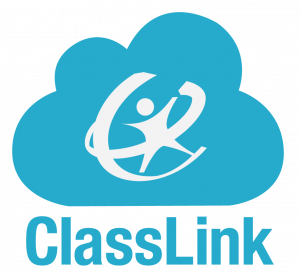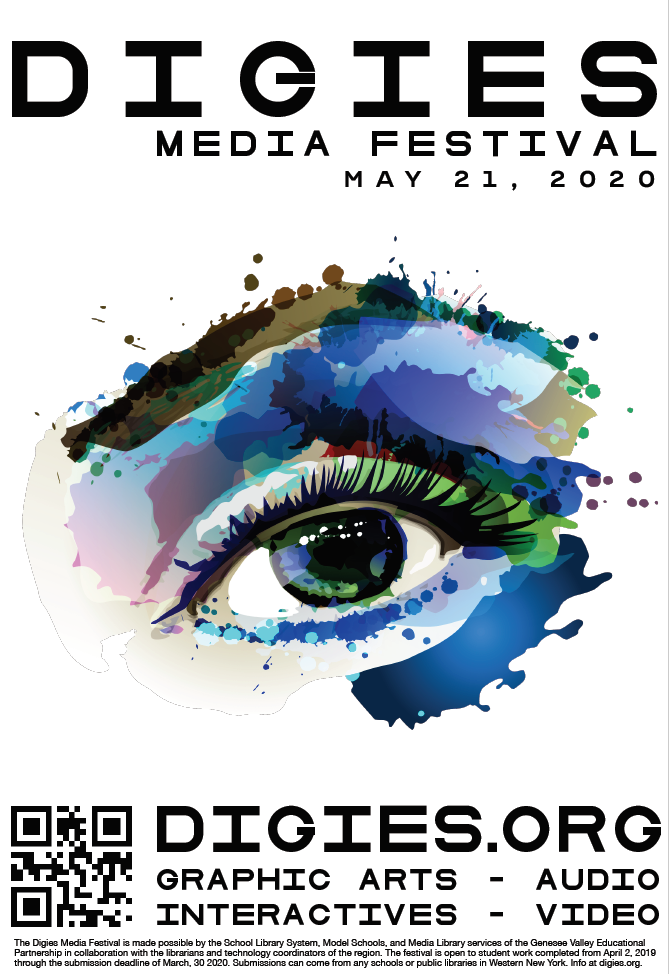Submissions are open for the 2020 Digies Festival. See their website at: www.digies.org
Monthly Archives: March 2020
There are two learning opportunities coming up in the next two weeks.

This week, Classlink is hosting a webinar on March 19 with New York school district technology leaders on Ed Law 2-d. If your district is already using ClassLink, this may be very valuable information for you. If you are using something else, it may still be valuable, but keep in mind they will be talking about the ClassLink product.
Webinar: Five district’s secret weapons and successful processes for NYS Ed. Law 2D compliance using ClassLink!
Thursday, March 19, 2020
9:00 am – 10:15 am EST
Register here: https://www.classlink.com/events/webinar-ed-law
Presenters and Panel:
- Shelley Rossitto, Former Technology Director, Monticello School Districts
- Dr. Ailene Cavaliere, Coordinator of Instructional Technology & CIO, Lindenhurst UFSD
- Rob Zdrojewski, Director of Technology, Oakfield-Alabama School District
- Reanna Fulton, Director of Technology, West Islip School District
- Dan DeMarco, Project Manager, ClassLink
- Bob Chappell, VP Instructional Technology, ClassLink
- Patrick Devanney, VP Interoperability, ClassLink
Discussion Topics:
- Single Sign-On – a tool to manage access to digital assets through a private district portal
- Roster Server – rostering, data reporting and improving data security and activity audit trails using the industry-standard OneRoster
- New tools & workflows to managing security agreements and 2D compliance, along with adding structure the on-boarding process of digital material
- OneSync – greater responsiveness and security by automating the creation and deactivation of network accounts
- Public Portal – facilitating the transparency of your digital landscape with community stakeholders

Next week, WXXI Education is hosting a free environmental-themed educator open house (Inventing Green Open House) on Wednesday, March 25 from 4-7 p.m. at WXXI Studios. It is open to any educator working with 2nd – 8th graders (8-13 years old). Educators can include: classroom teachers, after-school and out-of-school staff, librarians… There will be free learning materials, giveaways, prizes, local community partners, resources from PBS KIDS Design Squad Global, and more! The event is free but registration is required.
Options for sharing:
- Web link — https://www.wxxi.org/highlights/2020/03/inventing-green-educator-open-house
- FB event — https://www.facebook.com/events/243757256791008/
- Registration link — http://bit.ly/DSGEducatorOpenHouse
Come Talk With Great Women airs March 4 at 1 a.m. (3/25 at 3 a.m.) – filmed in Seneca Falls – conversations with women celebrating their achievements.
East Lake Meadows: A Public Housing Story airs 3/24 at 8 p.m. – – Learn the history of East Lake Meadows, a former public housing community in Atlanta. Stories from residents reveal hardship and resilience, and raise critical questions about race, poverty and who is deserving of public assistance.
Monroe One BOCES offers educators in districts that participate in our Multimedia service the SAFARI Montage instructional video platform, and Learn360 videos.
![]()
To get there, go to: https://media.monroe.edu and log in with your Active Directory account (what you would normally use to log in to your school computer)
To help you think through how to use video in your classroom, read this Eduptopia article from March of last year about using video in the classroom: https://www.edutopia.org/article/using-video-content-amplify-learning. It lays out very clear tips for using video in your classroom (summarized below).
It’s important to have a clear purpose for using a film, documentary or news clip. Make sure you’re not just assigning a video to use up time.
Be purposeful when using video, such as:
- Building background knowledge on a topic. Video is great for ELL students because they can pick up information using visual cues.
- Enriching a text or text excerpt. Video can help students visualize a place, event or person.
- Deepening or solidifying student learning. Giving students information in multiple modalities can help students learn more thoroughly.
Tips for using video:
- Be selective. Pick the most dynamic and pertinent clips to illustrate your point. Use the chapters feature in SAFARI Montage
- Provide a mission. “As you watch, pay attention to…” Setting a goal will keep students attentive.
- Pause to ponder (and write)
- Turn on closed captioning. Again, listening, while reading and using video images for visual clues are great multimodal ways for students to take in information.
Earth Focus (1000) (6/30 minute programs) airs Tuesdays at 4 a.m. beginning 3/3 – – EARTH FOCUS, a partnership between KCETLink and the Thomson Reuters Foundation provides audiences with urgent local and global environmental coverage that spotlights the issues, impact and possible solutions from a variety of unique perspectives.
- #1001 – Louisiana is learning from Hurricane Katrina. Forecasts are dire for Louisiana to experience the second-highest sea level rise in the world. There is a big movement brewing in New Orleans to build adaptive “resilience zones.” In Southeast Louisiana, the native peoples of the Isle de Jean Charles have become the first U.S citizens moving within their homeland displaced by climate change.
- #1002 – Populations are dramatically shifting as climate change drives migration. Droughts and floods are driving many people away from their rural, farming communities into big cities. We see how this is manifesting in Mongolia and examine the factors leading to the new community of Haitian people living in limbo at the border between Mexico and the U.S.
- #1003 – Two cities, San Francisco and Freetown, brace for climate change using vastly different methodologies. San Francisco’s developers are building expensive real estate on floodplains as officials try to heed expert projections on future sea levels. On the other side of the world, a deadly mudslide caused by torrential rains and deforestation in Sierra Leone shows the consequences of city planning that doesn’t take climate change into account.
- #1004 – Anticipating future water needs, two regions on opposite sides of the world turn to technology for answers. Western Morocco, near the Sahara Desert, is currently facing unprecedented drought and groundwater mismanagement. But an ancient method of gathering moisture from fog is being taught to 13 villages, allowing people to have a level of local control over their most basic need. Central Valley California: The food basket of the world uses nearly 80 percent of the entire state’s water supply. Yet there are still close to one million people who don’t have access to clean drinking water. Researchers at UCLA may change that through a technology that would allow unincorporated rural communities to control how contaminated water is treated.
- #1005 – Communities and innovators all over the world are creating new sustainable food sources that are resilient to climate change and growing populations. In Madagascar we see how villagers are closing off marine areas to allow the fish supply to replenish at a natural pace. In San Diego, California, aquaculturists are exploring open ocean farming as a more sustainable model for the fishing industry.
- #1006 – With so much biodiversity in the highly urban area of Los Angeles, species are thriving despite human interference, and in some cases because of it.
Watch Episode: Dying Oceans Abalone Restortaion in California
In our media rich society, it’s more important than ever to help our students become critical consumers of media. According to Media Literacy Now, “the average kindergartener sees about 70 media messages every day. By the time they’re in high school, teens are spending more than 1/3 of their day using media.” (1) Here are 5 questions they can ask to help become more media literate.
1. What is this media message saying to me?
Cut through all of the distractors and identify the main message. Is the message clear?
2. Who created this message?
Who wrote this? Is there a bigger entity behind the writer?
3. Why did they create it? Who makes money from it and how?
Did the person get paid to write the message? If the person didn’t get paid directly, are there advertisers surrounding the message? How could they be persuading the person who wrote the message?
4. How does the message make you feel? How might it make other people feel?
Does the message make you feel strongly about something? Do you think it could make others feel strongly about something? Does it stereotype others?
5. What creative technique was used to attract my attention to this media?
Does it use catchy music or visuals? Is the headline alarming or does it make you curious?
By asking these questions, students will get to the heart of media messages and how they are constructed, and ultimately empower themselves to be better digital citizens.
- Source:
(1) “What Is Media Literacy?” YouTube.com, Media Literacy Now, 17 Jan. 2017,
Do you have an idea for promoting media literacy in your classroom, but don’t have the cash to implement it?
Don’t fret! Help is here!

The New York State Educational Media/Technology Association provides up to two annual Media Literacy Project Grants in the amount of $1,250.
Media Literacy is defined as the ability to comprehend, design, and produce media. It includes critical thinking skills used to evaluate and analyze information in a variety of formats. Media Literacy is essential to be able to distinguish between fact and fiction.
The purposes of the grant are to:
-
Support educators who provide resources and services that correlate to state and national learning standards for instructional excellence promoting media literacy.
-
To provide funds for research projects or demonstration projects that can be replicated in other areas across the state and nation.
Examples include:
-
A film literacy course held after school
-
Learning about the effective creation and use of media in student work
-
Using video effectively in your lesson plans
Eligible educators must work in a district that participates in the media service at a BOCES or Big 5 that is an EMTA member.
For the application, click here: GRANT APPLICATION (WORD) or here: GRANT APPLICATION (PDF)
To see presentations on past projects, click here: EMTA WEBSITE-GRANT PAGE
Nial Ferguson’s Networld (3/60 minute programs) – Explore the history of social networks as historian/author Niall Ferguson reveals the intersection of social media, technology and cultural movements. He demonstrates how human behavior, technology and profit can energize ideas and change the world.
- #101 – Disruption – airs 3/17 at 8 p.m. – Focusing on the great network revolution of our time and the Protestant Reformation, Niall Ferguson untangles important issues surrounding why social media networks polarize us, why some ideas go viral and why truth itself is at a disadvantage.
- #102 – Winner Takes All – airs 3/17 at 9 p.m. – Looking at lessons from the past, Niall Ferguson tells the story of how a decentralized worldwide web shifted to become a highly profitable network controlled by a tiny elite selling our attention for billions to the world’s advertisers.
- #103 – Networld War – airs 3/17 at 10 p.m. – Focusing on the geopolitics of our interconnected world, with lessons from terrorism and surveillance, Niall Ferguson shows how our democracies are under threat from forces that exploit and weaponize the social networks that we invented.
SAFARI Montage is your guide to BOCES educational video resources!
Monroe One BOCES Multimedia service has a LOT of video resources FREE for Multimedia Service Members to use. During this hour-long workshop, we’ll learn how to access these videos, use them with classes, and take a look at our newest content.
This is for teachers and librarians in districts that participate in the Monroe One Multimedia Service.
Join us Tuesday, March 24th (3:30 pm – 4:30 pm)
Register here: https://www.mylearningplan.com/WebReg/ActivityProfile.asp?D=13458&I=3359920

